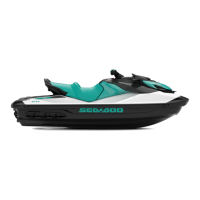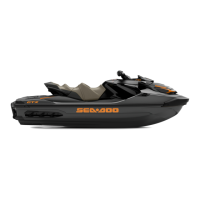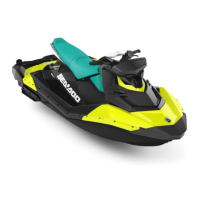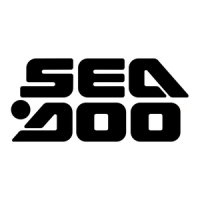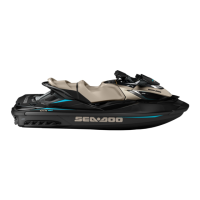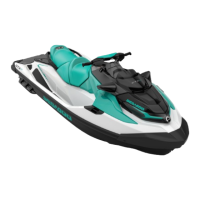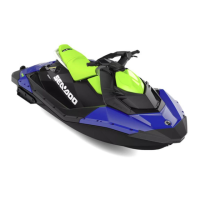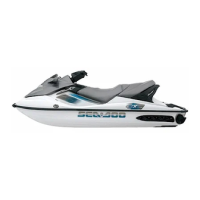Section 06 ENGINE MANAGEMENT (RFI)
Subsection 03 (COMPONENT ADJUSTMENT, INSPECTION AND REPLACEMENT)
COMPONENT ADJUSTMENT,
INSPECTION AND REPLACEMENT
SERVICE TOOLS
Description Part Number Page
ECM adapter.........................................................................
420 277 010
.........................................127
Fluke 111.............................................................................. 529 035 868 ......................................... 126
VCK (Vehicle Communication Kit).........................................
295 035 981 .........................................131
GENERAL
WARNING
The fuel system of a fuel injection system
holds much more pressure than on a car-
bureted watercraft. Prior to disconnecting
a hose or to removing a component from
the fuel system, follow the recommendation
described here.
– Always disconnect battery properly prior to
working on the fuel system.
WARNING
Fuel lines remain under pressure at all times.
Always proceed with care and use appro-
priate safety equipment when working on
pressurized fuel system. Wear safety glass-
es. Do not allow fuel to spill on hot engine
parts and/or on electrical connectors. Pro-
ceed with care when removing installing
high pressure test equipment or disconnect-
ing fuel line connections. Cover the fuel
line connection with an absorbent shop rag.
Slowly disconnect the fuel hose to minimize
spilling. Wipe off any fuel spillage in the
bilge. Fuel is flammable and explosive un-
der certain conditions. Always work in a well
ventilated area. Always disconnect battery
prior to work on the fuel system. After per-
forming a pressure test, use the valve on the
fuel pressure gauge to release the pressure
(if so equipped).
When a repair is completed, ensure that hose
from fuel rail going to fuel pump is properly se-
cured in his support. Then, pressurize the fuel
system as explained in FUEL SYSTEM section.
Properly reconnect the battery.
WARNING
Ensure to verify fuel line connections for
damage and that NO fuel line is disconnected
prior to installing the safety lanyard on the
DESS post. A pressure test must be done
before connecting the safety lanyard. The
fuel pump is started each time the safety lan-
yard is installed and it builds pressure very
quickly.
CAUTION: Never use injector cleaning prod-
ucts. They may contain additive that could
damage injector components. A copper wire
brush may be used to clean the tip of the direct
injectors if necessary.
Engine problems are not necessarily related to the
electronic fuel injection system.
It is important to check that the electrical system
is functioning properly:
– battery
– fuses
– DESS
– ignition (spark)
– ground connections
– wiring connectors.
If all of the above mentioned items are function-
ing correctly, the following verifications can be per-
formed to detect any faulty components.
smr2005-056 125

